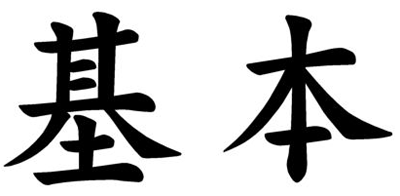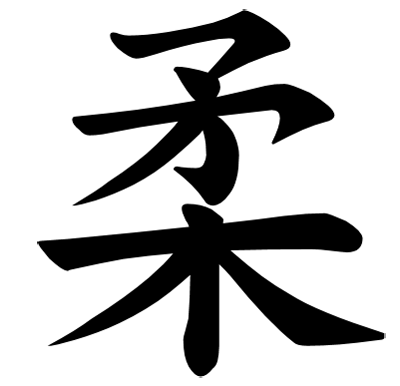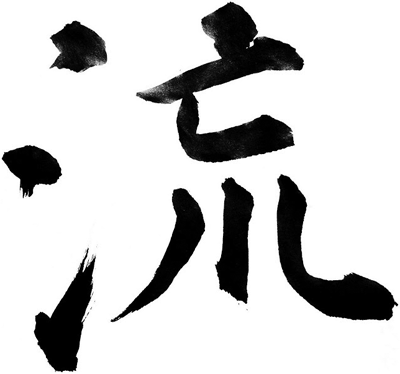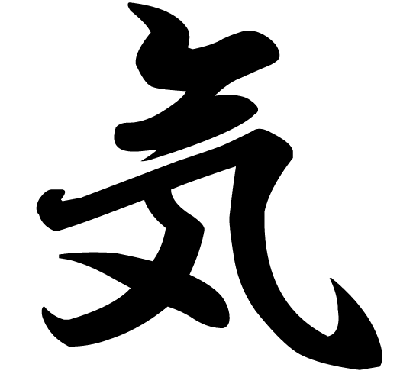There are four levels of technique in Aikido training.
- Katai (Rigid)
- Yawarakai (Flexible)
- Ki-No-Nagare (Flowing)
- Ki (Spirit)

Katai / Kihon
Katai training is also known as Kihon, and is what builds the foundation of Tai-Sabaki and Kokyu-Ryoku. Training is done with a partner, where one person acts as the attacker and the other as the defender, with the roles being reversed after each repetition.
In Katai training, the attacker establishes a strong grip on the defender's wrist, shoulder or other part of the body. The defender does not attempt to evade the attack, but allows the attacker to attain the initial advantage.
From this situation, the defender must perform a technique to escape from the attacker's grip and take control. The technique must be done accurately, or the defender will not be not be able to escape.
The principle of Awase in Aikido is to merge into an attacker's movement and take control. It is hardest to do using Katai technique, and for this reason Katai is the premiere method for learning strong technique in the shortest possible time. It is training to the hilt, because the defender is dealing with the attacker's full power, and any mistake will result in immediately obvious ineffectiveness.

Yawarakai
Yawarakai technique is intermediate between Katai and Ki-No-Nagare. The principle is similar to that of Judo, and the chinese character for Yawarakai is the same as the Ju in Judo. It comes into play where a defender attempts to perform a Katai technique, but is overpowered by the attacker. In this case, the defender gives in resiliently (like bamboo in the wind), but deflects the attack in a direction such that he can merge into the movement and take control.

Ki-No-Nagare
In Ki-No-Nagare technique, the defender does not wait for the attacker to obtain a grip, but begins merging into the attacker's movement before contact is made. Ki-No-Nagare is actually most practical for self-defense, and is also known as "leading Ki". Aikido is most known for this level of technique.
It is vitally important to establish a solid foundation in Katai technique before moving on to Ki-No-Nagare, and to continue training Katai to prevent losing touch with the basics. A person who is proficient in Katai can easily learn Ki-No-Nagare, but a person who has trained only Ki-No-Nagare will often not be able to move at all if gripped strongly. Katai training is what tunes a trainee into the reality of physical strength and how to overcome it under the worst possible conditions.

Ki
Ki is the ultimate of Aikido technique. The defender establishes a link of Ki with the defender and merges into the defender's power on a spiritual level.
Ki technique can be achieved only after many decades of hard Katai training. As the founder of Aikido, O-Sensei Morihei Uyeshiba, once stated, "I am what I am today only because I did Katai training for 50 years".
O-Sensei lived in Ki during the latter part of his life. Although many try to imitate O-Sensei's Ki technique, few if any have succeeded in achieving anything remotely comparable. Ki technique is something that beginners should know is possible, but will only frustrate themselves if they try to do it.
Real Ki technique is not a series of exercises based on the power of suggestion, but something profound that comes from tapping into Ki. It can be very gentle, as is generally associated with O-sensei in his latter years or, as Morihiro Saito-Sensei describes in his book "Traditional Aikido Vol. 5", on page 36, "Aikido is generally believed to represent circular movements. Contrary to such belief, however, Aikido, in its true Ki form, is a fierce art piercing straight through the center of opposition".
In summary, new trainees should concentrate on learning the basics through Katai training. By doing this, they will establish a solid foundation for the higher levels of technique.
- Awase
- Blend
- Katai
- Rigid
- Ki
- Spirit
- Ki-No-Nagare
- Flowing
- Kihon
- Basic
- Kokyu-Ryoku
- Abdominal breath power
- Tai-Sabaki
- Body movement
- Yawarakai
- Flexible
